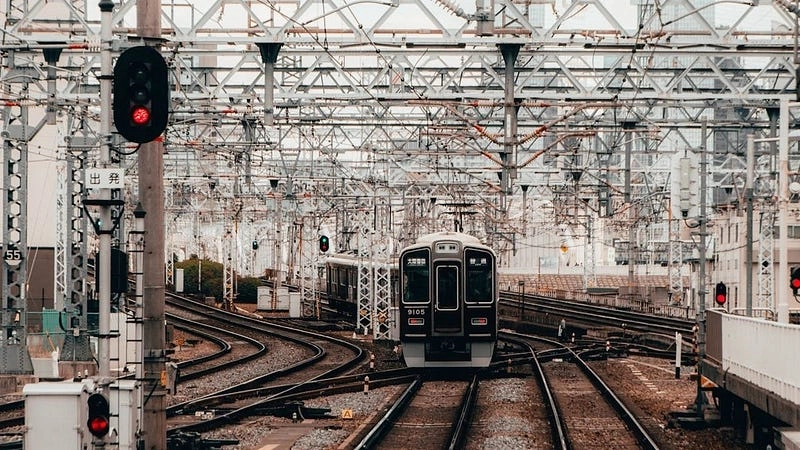Convert oblique photos to OSGB! Build precise models with GISBox's reverse tiling function
GISBox Official Teams: https://teams.live.com/l/invite/FEAr12sInvEVy4hFQE Official Teams Group: https://teams.live.com/l/invite/FBAFp0pbqhqlpe1BQI In the development of modern cities, transportation planning is directly related not only to the sustainable growth of cities, but also to citizens' daily mobility experience and quality of life. With the advancement of GIS technology, 3D visualization has become an indispensable tool for transportation planning. GISBox is a highly efficient GIS tiling and visualization software, and its oblique photo inverse tiling function plays an important role in transportation planning, providing planners with a more precise, intuitive and efficient solution. Reuse and analysis of data by inverse tiling In transportation planning, oblique photo data can reproduce urban roads, bridges, railways and other infrastructure in 3D models. However, when transportation planning teams use traffic simulation and design software, 3D data in OSGB format is often required. GISBox's oblique photo inverse tiling function can convert models in 3DTiles format to OSGB format, so that 3D models for web visualization can be reconverted into a format suitable for editing and analysis. This greatly improves the efficiency of reuse of transportation planning data and reduces the effort and cost of remodeling. For example, in traffic congestion analysis and simulation, GISBox can be used to reverse tile 3D tiles of urban road models in 3D tiles format into OSGB and then imported into traffic simulation software to perform driving path, signal control, and traffic flow analysis. Such data reuse capabilities shorten project time and improve planning accuracy. Second, traffic design with high-precision 3D modeling In traffic planning, high-precision 3D models are required for the design of complex structures such as bridges, intersections, and tunnels. With the reverse tiling function of GISBox, 3D tiles data generated from oblique photographs can be converted into OSGB format, so that high-precision 3D models can be imported into traffic design software (Civil 3D, Revit, InfraWorks, etc.) for secondary processing and detailed design. For example, in urban railway planning, GISBox can reverse tile large-scale oblique photograph models into OSGB format and then imported into design software to perform detailed design of station layout, track gradient, tunnel cross section, etc. Such precise design based on real-world models increases the consistency between the plan and the actual terrain and prevents design errors. Third, optimization and visualization of transportation facility layout Transportation planning requires a wide range of adjustments, such as road widening, improvement of grade separation, and optimization of public transportation. GISBox's reverse tiling function can export 3D scene data in OSGB format, and then work with BIM and CAD software to optimize facility layout. For example, when planning the installation of bus stops and parking lots, GISBox reverse tiles the city's oblique photo data into OSGB format, and then evaluates the layout in BIM software. By combining it with surrounding buildings, road flow lines, gradients, etc., you can intuitively evaluate the rationality of facility layout and make optimal plans. In addition, GISBox can tile the reverse-tiled OSGB model again into 3DTiles format and publish it on the Web. This multi-platform display function allows the results of transportation planning to be shared with government agencies, companies, and the general public, improving information transparency and decision-making efficiency. Summary GISBox's oblique photo reverse tiling function plays an essential role in transportation planning. This function enables free conversion and reuse of data formats, improving efficiency and accuracy at each stage of design, simulation, optimization, and visualization. Furthermore, it can also be applied to the maintenance and risk assessment of transportation infrastructure, contributing to the creation of smart cities and advanced transportation management.

GISBox Official Teams: https://teams.live.com/l/invite/FEAr12sInvEVy4hFQE
Official Teams Group: https://teams.live.com/l/invite/FBAFp0pbqhqlpe1BQI
In the development of modern cities, transportation planning is directly related not only to the sustainable growth of cities, but also to citizens' daily mobility experience and quality of life. With the advancement of GIS technology, 3D visualization has become an indispensable tool for transportation planning. GISBox is a highly efficient GIS tiling and visualization software, and its oblique photo inverse tiling function plays an important role in transportation planning, providing planners with a more precise, intuitive and efficient solution.
- Reuse and analysis of data by inverse tiling In transportation planning, oblique photo data can reproduce urban roads, bridges, railways and other infrastructure in 3D models. However, when transportation planning teams use traffic simulation and design software, 3D data in OSGB format is often required. GISBox's oblique photo inverse tiling function can convert models in 3DTiles format to OSGB format, so that 3D models for web visualization can be reconverted into a format suitable for editing and analysis. This greatly improves the efficiency of reuse of transportation planning data and reduces the effort and cost of remodeling.
For example, in traffic congestion analysis and simulation, GISBox can be used to reverse tile 3D tiles of urban road models in 3D tiles format into OSGB and then imported into traffic simulation software to perform driving path, signal control, and traffic flow analysis. Such data reuse capabilities shorten project time and improve planning accuracy.
Second, traffic design with high-precision 3D modeling
In traffic planning, high-precision 3D models are required for the design of complex structures such as bridges, intersections, and tunnels. With the reverse tiling function of GISBox, 3D tiles data generated from oblique photographs can be converted into OSGB format, so that high-precision 3D models can be imported into traffic design software (Civil 3D, Revit, InfraWorks, etc.) for secondary processing and detailed design.
For example, in urban railway planning, GISBox can reverse tile large-scale oblique photograph models into OSGB format and then imported into design software to perform detailed design of station layout, track gradient, tunnel cross section, etc. Such precise design based on real-world models increases the consistency between the plan and the actual terrain and prevents design errors.
Third, optimization and visualization of transportation facility layout
Transportation planning requires a wide range of adjustments, such as road widening, improvement of grade separation, and optimization of public transportation. GISBox's reverse tiling function can export 3D scene data in OSGB format, and then work with BIM and CAD software to optimize facility layout.
For example, when planning the installation of bus stops and parking lots, GISBox reverse tiles the city's oblique photo data into OSGB format, and then evaluates the layout in BIM software. By combining it with surrounding buildings, road flow lines, gradients, etc., you can intuitively evaluate the rationality of facility layout and make optimal plans.
In addition, GISBox can tile the reverse-tiled OSGB model again into 3DTiles format and publish it on the Web. This multi-platform display function allows the results of transportation planning to be shared with government agencies, companies, and the general public, improving information transparency and decision-making efficiency.
Summary
GISBox's oblique photo reverse tiling function plays an essential role in transportation planning. This function enables free conversion and reuse of data formats, improving efficiency and accuracy at each stage of design, simulation, optimization, and visualization. Furthermore, it can also be applied to the maintenance and risk assessment of transportation infrastructure, contributing to the creation of smart cities and advanced transportation management.










































































































































































![[The AI Show Episode 142]: ChatGPT’s New Image Generator, Studio Ghibli Craze and Backlash, Gemini 2.5, OpenAI Academy, 4o Updates, Vibe Marketing & xAI Acquires X](https://www.marketingaiinstitute.com/hubfs/ep%20142%20cover.png)



























































































































![[FREE EBOOKS] The Kubernetes Bible, The Ultimate Linux Shell Scripting Guide & Four More Best Selling Titles](https://www.javacodegeeks.com/wp-content/uploads/2012/12/jcg-logo.jpg)



![From drop-out to software architect with Jason Lengstorf [Podcast #167]](https://cdn.hashnode.com/res/hashnode/image/upload/v1743796461357/f3d19cd7-e6f5-4d7c-8bfc-eb974bc8da68.png?#)






































































































.png?#)




.jpg?#)































_Christophe_Coat_Alamy.jpg?#)








































































































![Rapidus in Talks With Apple as It Accelerates Toward 2nm Chip Production [Report]](https://www.iclarified.com/images/news/96937/96937/96937-640.jpg)











































































































































